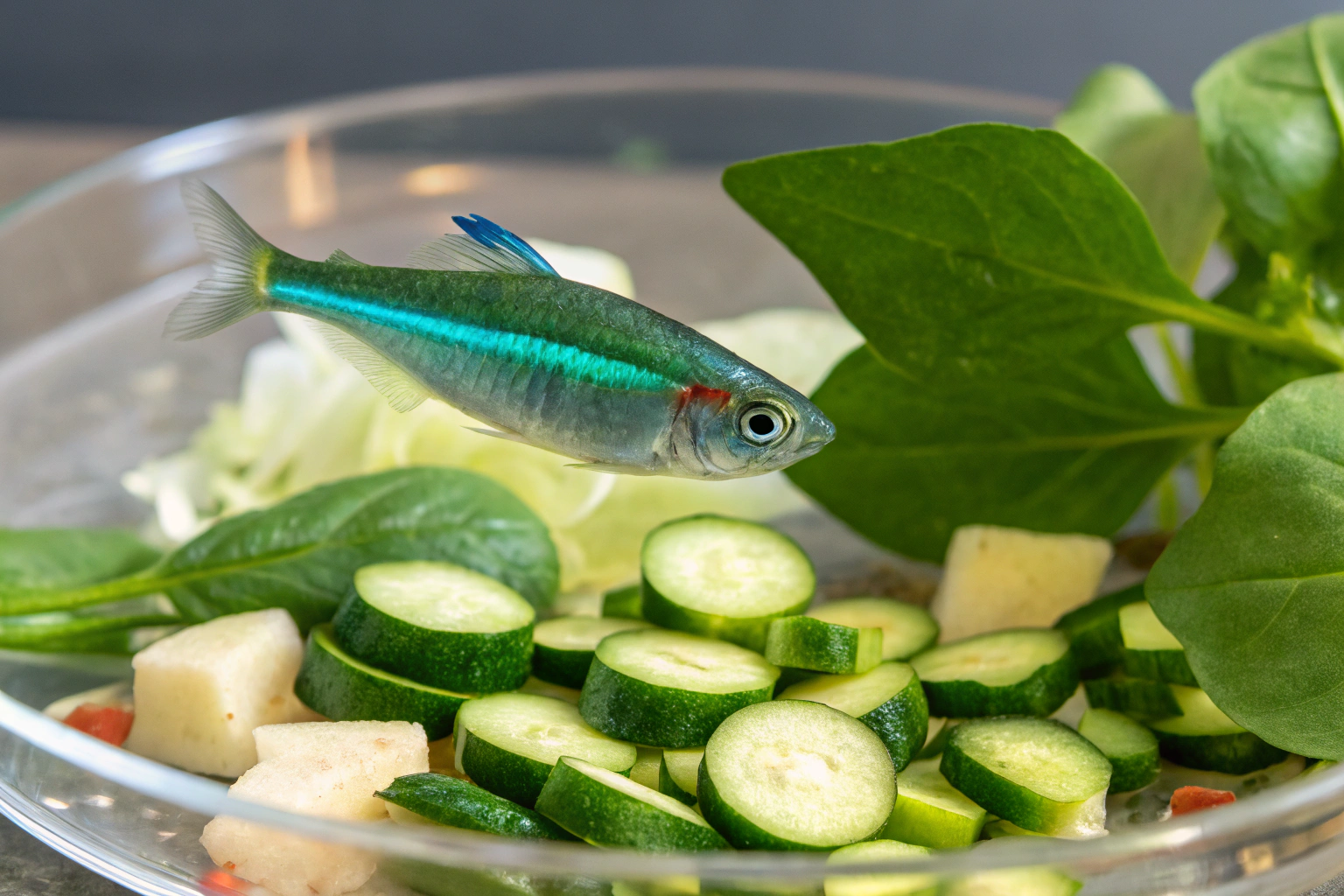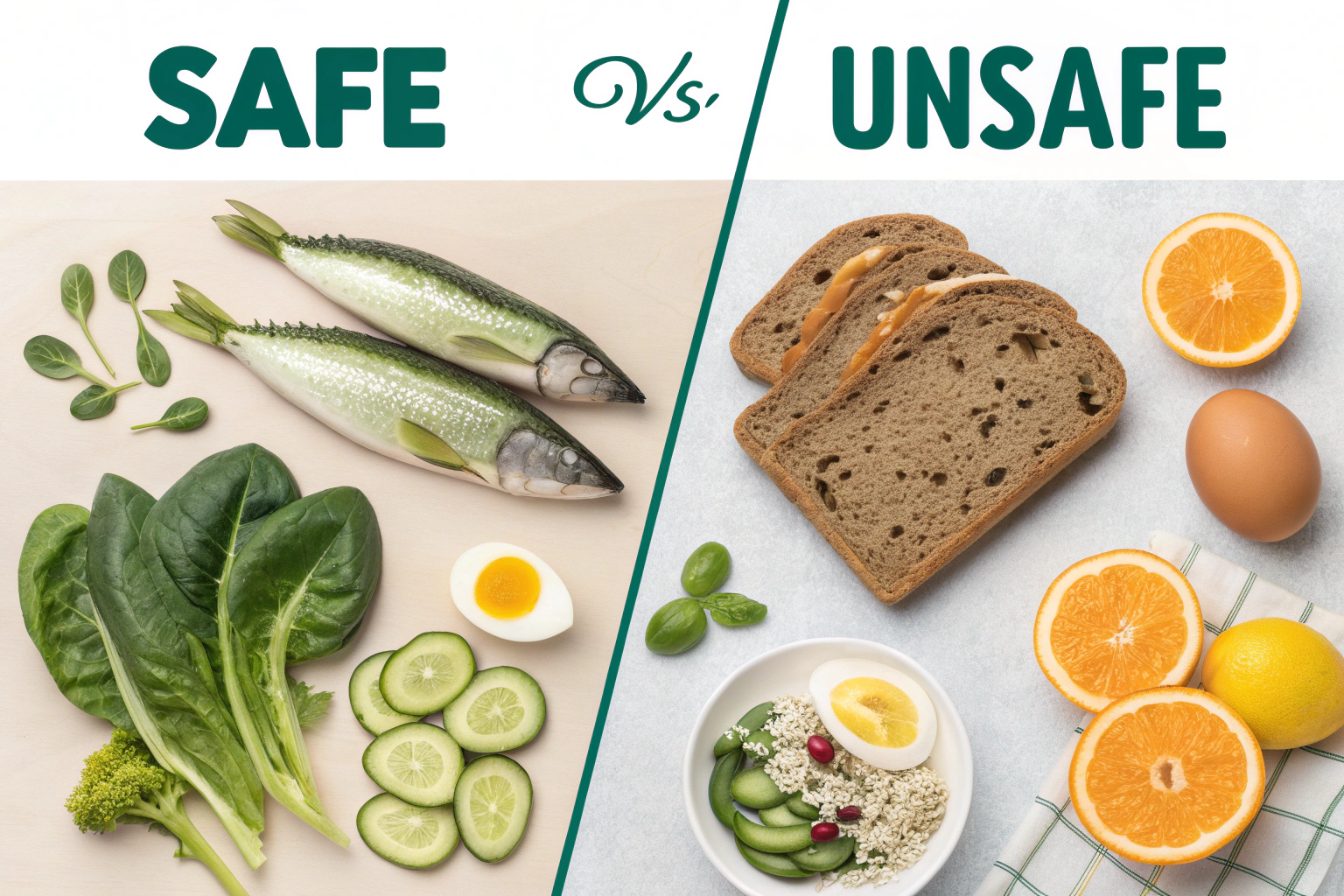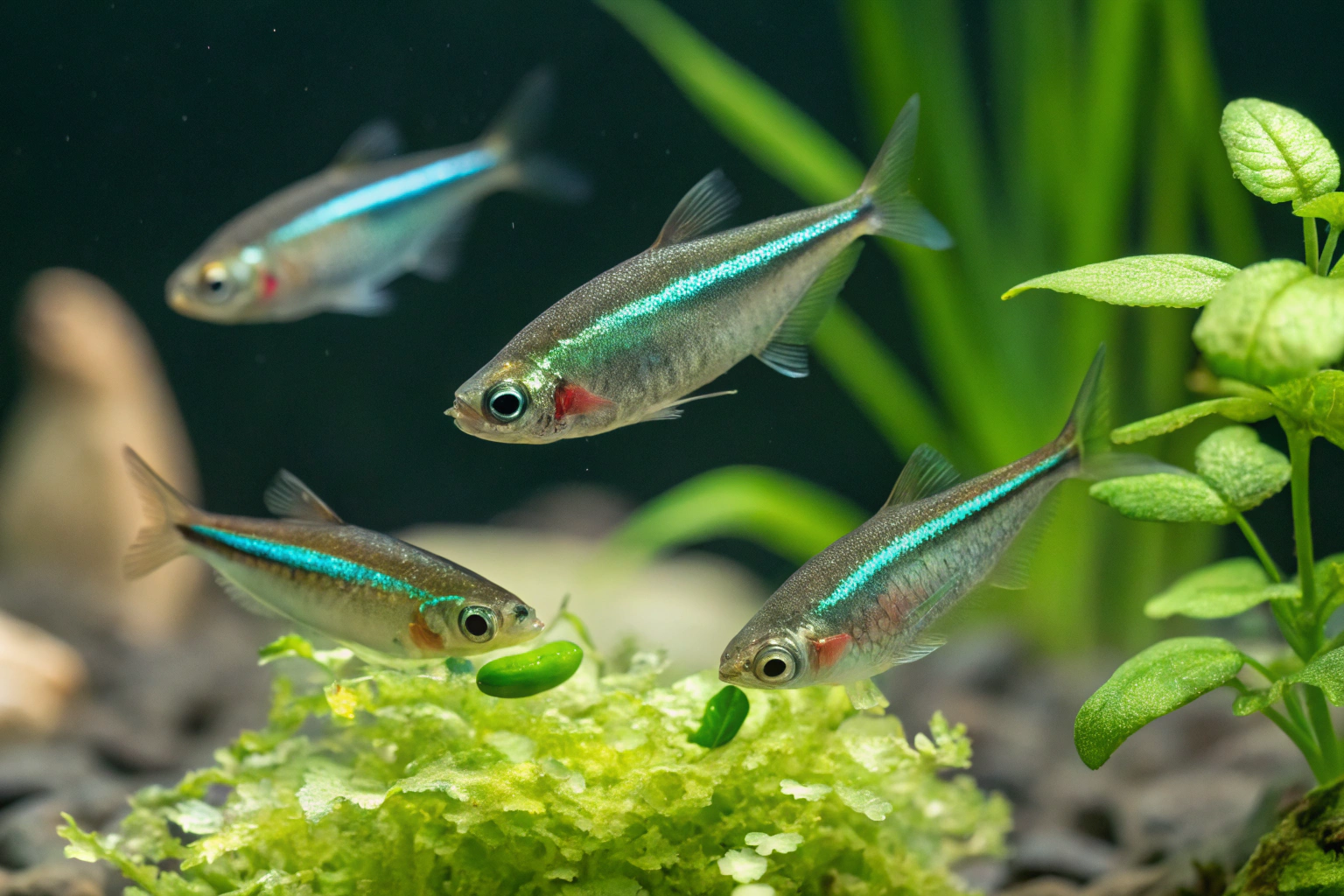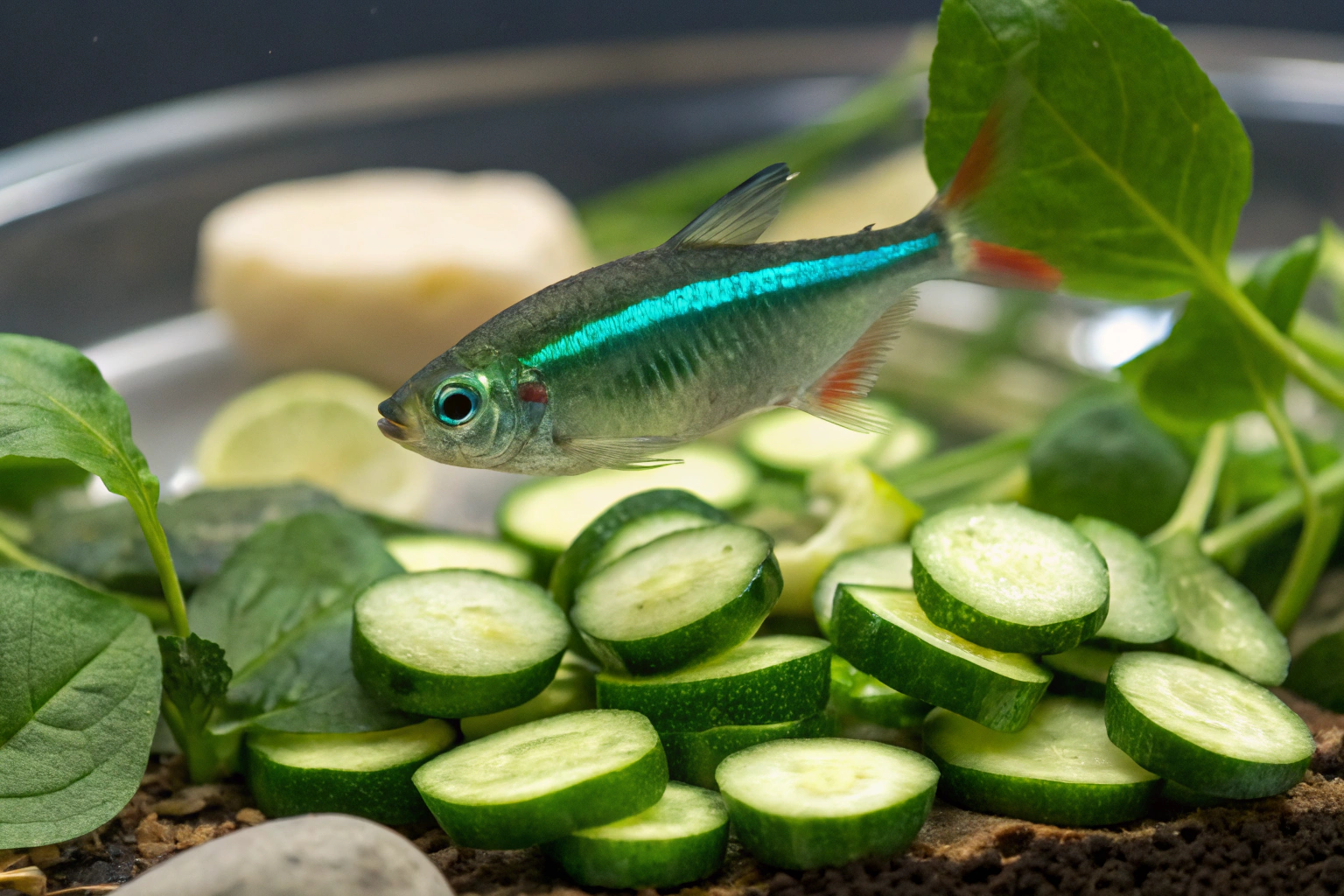What Human Food Can Green Neon Tetra Fish Eat? A Complete Guide for Aquarium Owners
This post may contain affiliate links.
Green neon tetras are among the most popular freshwater aquarium fish, known for their vibrant colors and peaceful nature. While commercial fish food provides the foundation of their diet, many aquarium enthusiasts wonder: what human food can green neon tetra fish eat safely? This comprehensive guide explores safe human food options, feeding guidelines, and essential nutritional considerations for your green neon tetras.

Understanding Green Neon Tetra Dietary Needs
Green neon tetras (Paracheirodon simulans) are omnivorous fish that require a balanced diet of proteins, carbohydrates, and essential nutrients. In their natural Amazon habitat, these small fish consume microscopic organisms, plant matter, and tiny invertebrates. Understanding their nutritional requirements is crucial when considering human food alternatives.
Primary Nutritional Requirements:
- Protein: 35-45% for optimal growth and coloration
- Carbohydrates: 15-25% for energy
- Fats: 5-10% for essential fatty acids
- Vitamins and minerals: For immune system support
Safe Human Foods for Green Neon Tetras
1. Vegetables and Plant Matter
Blanched Vegetables are excellent supplements to your green neon tetra’s diet:
- Spinach: Rich in iron and vitamins A, C, and K
- Lettuce: Provides fiber and essential nutrients
- Zucchini: Soft texture perfect for small fish mouths
- Cucumber: High water content and gentle on digestive systems
- Broccoli: Packed with vitamins and minerals
Preparation Method: Blanch vegetables in boiling water for 30-60 seconds, then cool immediately in ice water. This softens the texture while preserving nutrients.
2. Protein Sources
Cooked Egg Yolk serves as an excellent protein source for green neon tetras. The soft consistency makes it easily digestible for these small fish. Remove any uneaten portions within 2-3 hours to prevent water quality issues.
Cooked Fish (without seasoning) can occasionally supplement their diet. Ensure the fish is thoroughly cooked and contains no bones, salt, or spices.
3. Grains and Starches
Cooked Rice (plain, without salt or butter) provides carbohydrates and can be offered in small quantities. The rice should be soft and broken into tiny pieces appropriate for the fish’s mouth size.
Oatmeal (plain, cooked) offers similar nutritional benefits and should be prepared without any additives.

Foods to Avoid Completely
Certain human foods pose serious health risks to green neon tetras:
- Bread and processed grains: Can cause bloating and digestive issues
- Dairy products: Fish cannot digest lactose
- Chocolate and sweets: Toxic to fish
- Onions and garlic: Can damage red blood cells
- Citrus fruits: Too acidic for fish digestive systems
- Spicy or seasoned foods: Can irritate delicate digestive tracts
Feeding Guidelines and Best Practices
Portion Control
Green neon tetras have small stomachs approximately the size of their eye. Feed only what they can consume in 2-3 minutes, twice daily.
Preparation Requirements
- Size: Cut all food into pieces smaller than the fish’s mouth
- Temperature: Ensure food is at room temperature
- Cleanliness: Thoroughly wash all vegetables and prepare food in clean conditions
Frequency Recommendations
- Commercial food: Daily (primary diet)
- Human food supplements: 1-2 times per week maximum
- Treats: Sparingly, only as occasional supplements
Water Quality Considerations
When feeding human food to green neon tetras, monitor water parameters closely. Organic matter decomposes quickly, potentially affecting:
- Ammonia levels: Can spike from uneaten food
- pH balance: May shift due to decomposing organic matter
- Oxygen levels: Bacterial breakdown consumes dissolved oxygen
Remove any uneaten food within 2-3 hours to maintain optimal water quality.

Nutritional Benefits of Human Food Supplements
Enhanced Coloration
Vegetables rich in carotenoids can enhance the vibrant green and blue colors that make neon tetras so appealing. According to aquarium nutrition experts, natural pigments from vegetables often provide superior color enhancement compared to artificial additives.
Improved Immune Function
Fresh vegetables provide antioxidants and vitamins that support immune system health. Research on fish nutrition indicates that varied diets contribute to better disease resistance in aquarium fish.
Digestive Health
The fiber content in properly prepared vegetables aids digestion and can prevent common digestive issues in captive fish.
Alternative Feeding Options
For aquarium owners seeking convenient alternatives to preparing human food, consider these options:
Commercial Alternatives
- High-quality flake food: Specifically formulated for tetras
- Frozen bloodworms: Natural protein source
- Freeze-dried daphnia: Mimics natural diet components
- Micro pellets: Size-appropriate for small fish
Live Food Options
Experienced aquarists often recommend incorporating live foods like baby brine shrimp or micro worms for optimal nutrition and natural feeding behavior.
Signs of Proper Nutrition
Healthy, well-fed green neon tetras exhibit:
- Vibrant coloration: Bright green and blue hues
- Active swimming behavior: Energetic schooling patterns
- Proper body condition: Not thin or bloated
- Regular eating habits: Eager feeding response
Common Feeding Mistakes to Avoid
Overfeeding
The most common mistake aquarium owners make is providing too much food. Overfeeding leads to:
- Poor water quality
- Obesity in fish
- Increased disease susceptibility
- Algae growth
Inconsistent Diet
Sudden dietary changes can stress fish and cause digestive upset. Introduce new foods gradually over several days.
Ignoring Individual Needs
Some green neon tetras may have specific dietary requirements based on age, health status, or breeding condition.
Special Considerations for Breeding Fish
Breeding green neon tetras have increased nutritional requirements. Professional breeders recommend increasing protein content and feeding frequency during spawning periods.
Seasonal Feeding Adjustments
Water temperature affects metabolism in green neon tetras. During cooler periods, reduce feeding frequency as fish metabolism slows. Conversely, slightly increase feeding during warmer months when metabolism increases.

Conclusion
While green neon tetras can safely consume certain human foods as dietary supplements, commercial fish food should remain their primary nutrition source. Vegetables like blanched spinach, zucchini, and cucumber provide excellent nutritional variety when prepared properly. Always prioritize water quality, portion control, and gradual dietary transitions when introducing human food to your aquarium.
Remember that every aquarium is unique, and what works for one setup may not work for another. Monitor your fish closely when introducing new foods and consult with experienced aquarium professionals if you notice any adverse reactions.
By following these guidelines, you can safely supplement your green neon tetras’ diet with appropriate human foods while maintaining their health, vibrant coloration, and active behavior that makes them such beloved aquarium inhabitants.
For more detailed information about green neon tetra care, water parameters, and advanced feeding techniques, explore our comprehensive aquarium fish care resources and connect with fellow aquarists in our community forums.
